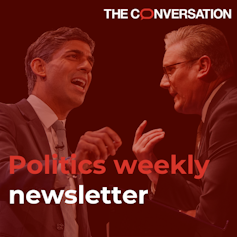In the second half of the 20th century, the structure of the British electorate was relatively straightforward. At its core, identifying with a party came down to your attitude to economic inequality and what (if anything) you thought the state should do about it. It’s a simplification, but not a massive one, to say that the political map was one-dimensional: left versus right, Labour versus Conservative.
But this has changed in recent decades. The EU referendum didn’t break down along left-right lines. Instead, Brexit divided the electorate into social liberals and social conservatives.
Social liberals feel a society is richer if it contains a diversity of ethnicities, religions, languages, genders, and social norms. They tend to see immigration in positive terms. Social conservatives value community cohesion and see the diversity that liberals value as a threat to social order. They tend to see immigration in negative terms.

Want more election coverage from The Conversation’s academic experts? Over the coming weeks, we’ll bring you informed analysis of developments in the campaign and we’ll fact check the claims being made.
Sign up for our new, weekly election newsletter, delivered every Friday throughout the campaign and beyond.
At the National Centre for Social Research (NatCen), we have been running the British Social Attitudes survey since 1983. This produces data that shows how these emerging identities have redrawn the electoral map.
Our analysis involved using machine learning to look at thousands of combinations of different survey questions about social and political issues, to see which combination performed this task most effectively. We ended up with 12 questions that sort the electorate into six distinct groups. These six groups differ according to three main dimensions: the old left versus right split, the now-familiar liberal versus conservative split, and the degree to which people are engaged with politics.
You can answer these survey questions yourself by taking our quiz. You’ll be asked how far you agree or disagree with different statements, including “ordinary working people do not get their fair share of the nation’s wealth”, and “young people today don’t have enough respect for traditional British values”.
The issues that dominate elections are different every time. And while in 2024 the key issues are the NHS, the economy, and the competence of our elected representatives, zoom out and you’ll see that these are just ripples on the surface. There are deeper tides of public opinion that are more stable and more structured. On the big issues, about the kind of society we want to live in and way we want to get there, the public are divided. This is the long-term challenge for political parties.
The six types of voter
The British electorate can now be divided into these six groups:
The “middle Britons”, who are largely in the centre politically. They have no clear party affiliation and are hard to win over. They account for over a quarter of the electorate.
The “well-off traditionalists”, who are politically engaged, with economically right-wing and socially conservative views that align with the Conservative party. They’re likely to live in the south-east.
The “apolitical centrists”, who are the least politically engaged group. They are relatively young and tend to have lower incomes. They’re the least likely to vote, but if they do, they are likely to choose either the Conservatives or Labour.
The “left-behind patriots”, who have left-wing economic views but are conservative in their social outlook. They mostly voted for Brexit, and are more likely that any other group to support Nigel Farage’s Reform UK party.
The “urban progressives”, who are graduates and professionals, and are very likely to vote. They lean strongly to the left on economic issues and are liberal on social issues.
The “soft-left liberals”, who are also likely to vote. They are university-educated and left-leaning on social issues, but more centrist on the economy.
Navigating this political map is not straightforward for political parties. Britain’s electoral system is complex because the location of voters matters.
We’ve overlaid our six key voter types onto English and Welsh constituencies, to see which voter groups are more common in different places. For instance, urban progressives are over-represented in the Brighton Pavilion constituency, while in neighbouring Lewes, voters are more likely to be well-off traditionalists.
The Labour party’s core support comes from urban progressives, a group of highly engaged voters who tend to live in urban constituencies that already have strong Labour majorities (although in Scotland, Labour is competing for their vote with the SNP).
To win, the party needs to appeal to a broader coalition, including some voters who are only slightly left leaning economically (the soft-left liberals and the middle Britons), and other voters who are left wing but socially conservative and politically disengaged (the left-behind patriots).
On some issues, the coalition of voters the Labour party is targeting is relatively united, such as inequality and the NHS. But on other issues, such as immigration or transgender rights, this same coalition is divided. Some of Labour’s target voters are highly engaged, and will vocally criticise any perceived missteps, whereas others are harder to reach.
This is why Labour’s election campaign is focusing heavily on the NHS and the economy while the party simply refuses to state a clear position on others.
For the Conservatives, the picture is perhaps even more challenging. Their core vote comes from a relatively small group of politically engaged voters who are economically right wing and socially conservative: the well-off traditionalists.
But they also need to appeal to voters who fit into other groups: left-behind patriots who are socially conservative and economically left wing, as well as soft-left liberals who are economically centrist and socially liberal. This voter coalition is divided on both the left-right dimension and the liberal-conservative dimension.
The Conservatives do not have a dominant political narrative that appeals across voter types – such as 2019’s “Get Brexit done”. This helps explain why it is struggling to hold that 2019 coalition together.

